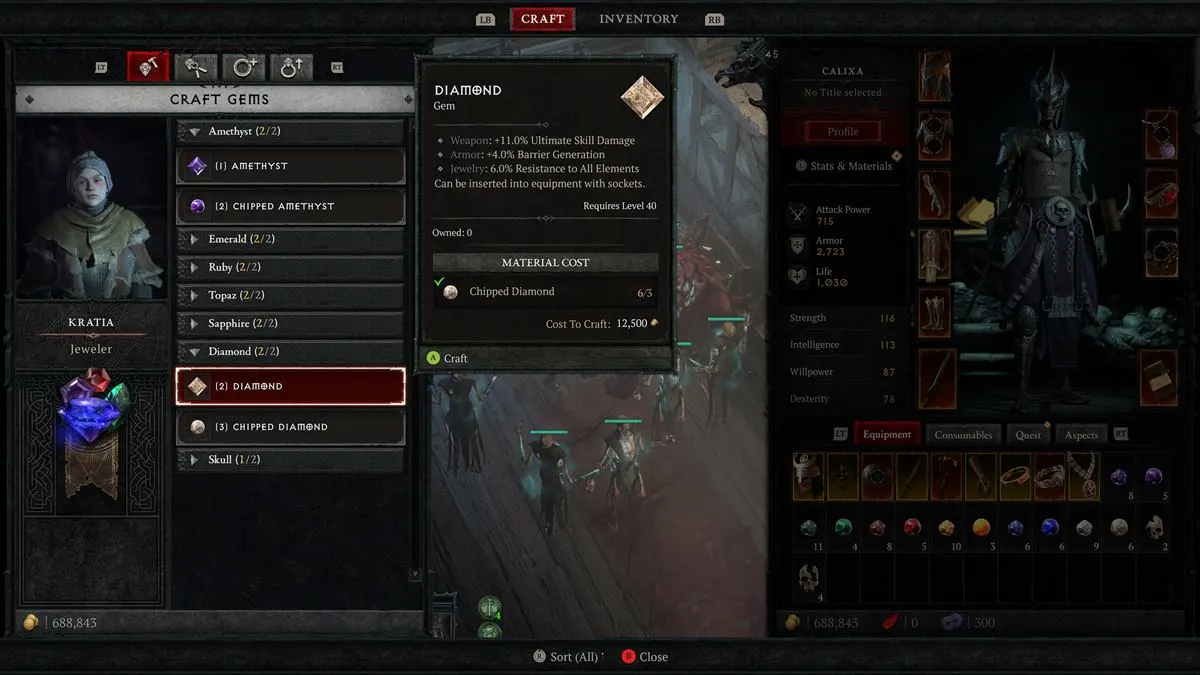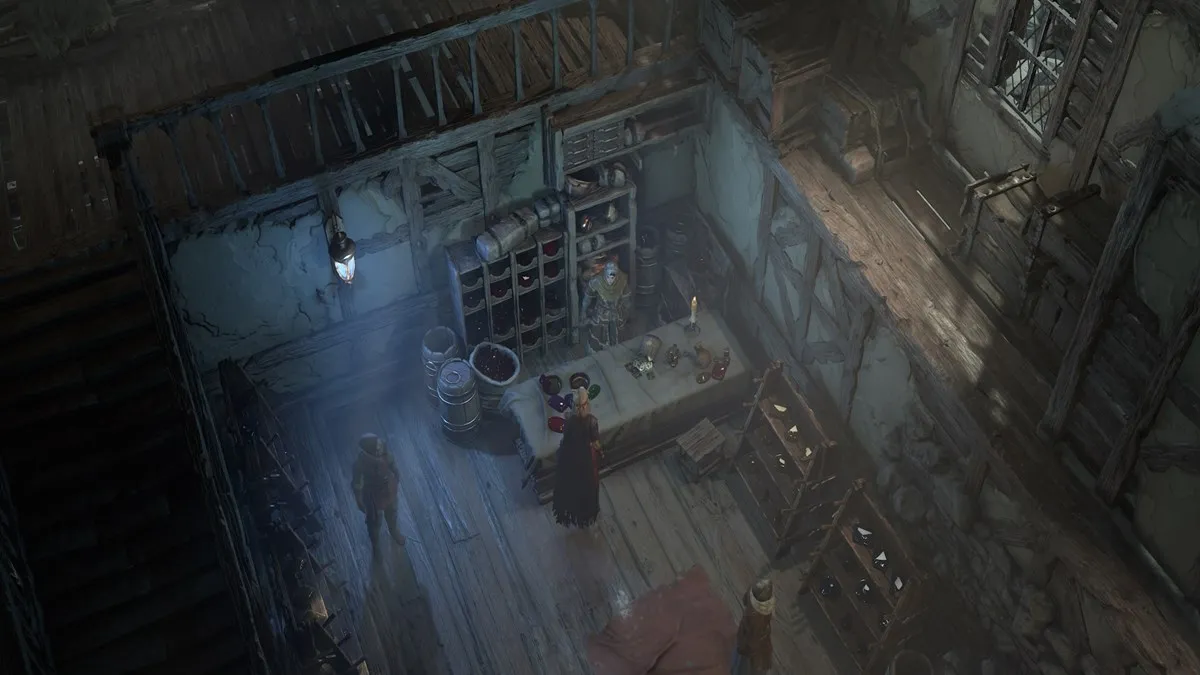The Diablo 4 Jeweler provides several important functions that can aid you throughout the course of the campaign. Indeed, it’s a vendor you’ll visit time and time again to make use of the various Gems you acquire across your travels. You’ll also want to stop here to socket Gems, remove them, and upgrades accessories. Our guide details all of the Jeweler functions in Diablo 4, as well as Gem effects and more.
How to Craft Gems, Sockets, and Upgrade Accessories at the Diablo 4 Jeweler
Diablo 4 Jeweler NPCs can be found in most capitals and towns (i.e., hubs with fast travel points) throughout Sanctuary. They are represented by a gem/crystal icon. They provide several services, such as giving you the ability to craft Gems, socket/unsocket Gems, and upgrade accessories.
How to Craft Gems in Diablo 4

The Diablo 4 gems system remains generally unchanged from previous iterations. If you’re a veteran of the series, then you’ll know what to expect. For newcomers, however, the gist is that each gem type is categorized by quality. You’ll need three of a certain type to upgrade to a higher-quality tier (i.e., 3x Crude for 1x Chipped). You’ll be able to see the cost in the pop up menu that appears.
Gem Effects
It’s worth knowing what effects are tied to each Gem before crafting them. I’ve listed down the Diablo 4 Gem types and their effects when socketed to weapons, armor, or jewelry below.
Amethyst
- Weapon: Damage over time.
- Armor: Damage taken over time reduction.
- Jewelry: Shadow resistance.
Emerald
- Weapon: Critical strike damage to vulnerable enemies.
- Armor: Thorns.
- Jewelry: Poison resistance.
Ruby
- Weapon: Overpower damage.
- Armor: Maximum life/HP.
- Jewelry: Fire resistance.
Topaz
- Weapon: Basic skill damage.
- Armor: Damage reduction while control impaired.
- Jewelry: Lightning resistance.
Sapphire
- Weapon: Critical strike damage to crowd-controlled enemies.
- Armor: Damage reduction while Fortified.
- Jewelry: Cold resistance.
Diamond
- Weapon: Ultimate skill damage.
- Armor: Barrier generation.
- Jewelry: Resistance to all elements.
Skull
- Weapon: Life on kill.
- Armor: Healing received.
- Jewelry: Armor.
How Sockets Work in D4: Inserting Gems, Adding Sockets, and Removing Gems

Items with a circular icon (i.e., a socket) allow you to insert Gems. The jewel will provide a particular effect or stat boost depending on the type of item into which it’s socketed. For instance, socketing a Diamond into your axe will give a slight increase to your ultimate skill damage. Meanwhile, socketing it into your ring will grant a boost to all-elemental resistance.
If you want to remove (or unsocket) a gem that’s already inserted, you’ll want to make use of the Unsocket action in the second Jeweler tab.
Likewise, you can go to the Add Socket tab (i.e., third Jeweler tab) to create an extra socket for a gear piece that you select. Note, however, that this often requires rare materials, such as Scattered Prisms, that normally drop from bosses.
How to Upgrade Accessories With Gems
The Diablo 4 Jeweler NPCs aren’t just there to craft and socket jewels. They can also upgrade your accessories, such as rings and amulets. Each upgrade level, represented by a pip, improves that item’s power and stats. However, the cost in materials will also increase. The Jeweler also has a counterpart, the Blacksmith, that focuses primarily on weapon and armor upgrades.
Now you know all the related mechanics when it comes to the Diablo 4 Jeweler NPC and gems functions. Be sure to make regular use of the vendor to keep items leveled and at their full potential. Don’t be afraid to experiment to see the various effects you can get. For more tips and walkthroughs, head over to our D4 guides hub.







Published: Jun 3, 2023 03:05 pm